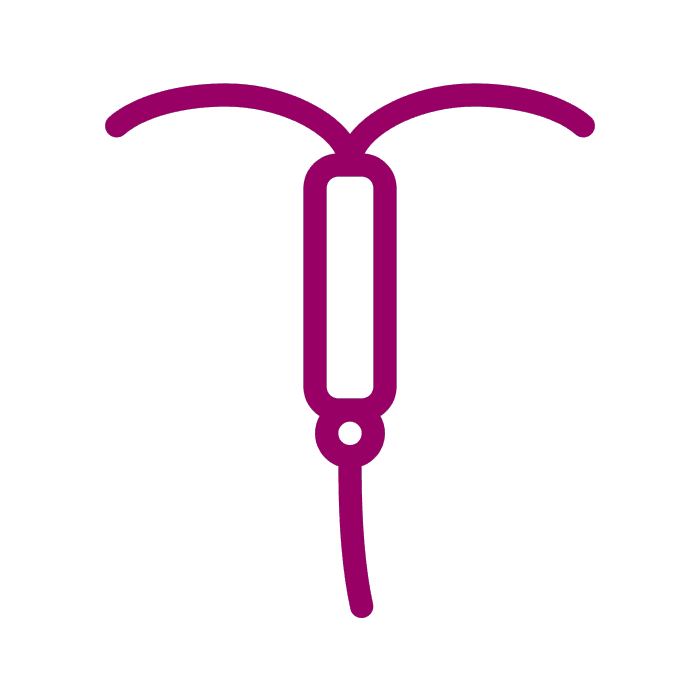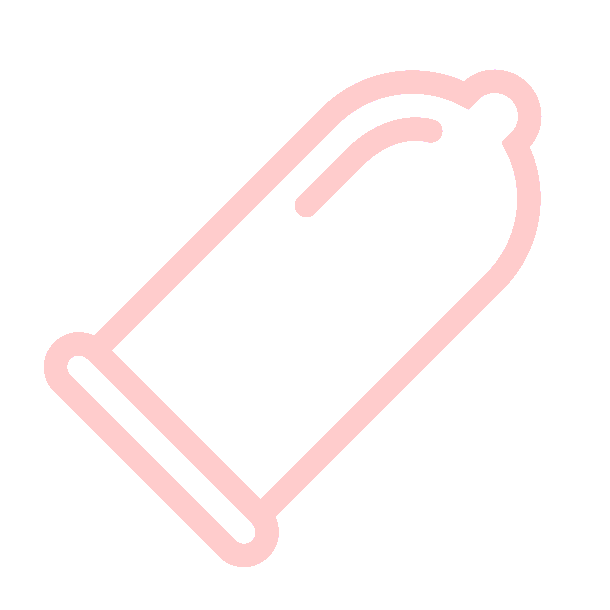
SPONGE
Barrier Method
A sponge blocks the entrance to the cervix and releases spermicide, both together stopping sperm from entering the womb and fertilizing an egg.
76 % Effective
Details
The vaginal sponge is a small round sponge made of plastic and contains spermicides. It is inserted into the vagina so that it rests against the cervix. The sponge prevents pregnancy by blocking the entrance to your uterus and the spermicide slows sperm down so it can’t reach your egg. It is not widely available and is one of the least effective methods of contraception.
How to
You need to use the sponge every time you have sex. With clean hands, wet the sponge to activate the spermicide. Squeeze out the excess water, but not so that sponge is dry. With the dimpled part of the sponge facing upwards, fold the edges together so that it is long and narrow. You then insert the sponge into your vagina like a tampon, pushing it up as far as it will go so that it covers your cervix.
The sponge can be inserted up to 24 hours before sex, allowing you to have as many times as you want in the next 24 hours with no need to replace it. You will need to leave the sponge in for at least 6 hours after the last time you had sex. Do not leave it in for more than 30 hours in total.
Each sponge can only be used once and must be thrown away after use.
Pros
It can be used on demand
It provides you with up to 24 hours of protection from pregnancy
It does interrupt sex
It is hormone-free
Cons
It must be used every time you have sex
It is one of the least effective methods of contraception.
It is not readily available
It takes practice to insert it correctly
It does not provide protection from sexually transmitted diseases
It may cause allergic reactions or irritation
Side Effects
Some people may experience irritation in or around the vagina or penis
Frequently Asked Questions
-
A sponge blocks the entrance to the cervix and releases spermicide, both together stopping sperm from entering the womb and fertilizing an egg.
-
Yes. The contraceptive sponge will not be affected in any way.
-
You may use the sponge as often as you wish but not during your menstrual period.
-
The contraceptive sponge is held in place by the muscles of the upper vagina. The cup-like indention in the sponge helps to keep it in place directly over the cervix. The opening from the vagina to the uterus is far too small for the sponge to pass through. There is no way that the sponge could access any other part of your body.
-
The sponge is a hormone-free vaginal contraceptive that does not disrupt your menstrual cycle.
-
Always apply your contraceptive patch to clean, dry skin. Do not use lotions, creams, oils, powder, or makeup on the skin where you are going to put the patch or on top of or near a patch you are wearing. These products may cause the patch to fail to stick or become loose.















CONTRACEPTIVE METHODS
CONTRACEPTIVE METHODS
-

CONTRACEPTIVE IMPLANT
1 or 2 small hormone-releasing silicone rods placed under the skin by a healthcare provider.
-

CONTRACEPTIVE INJECTION
The contraceptive injection is a shot of hormones that lasts for 1 up to 3 months.
-

CONTRACEPTIVE PATCH
A patch that sticks to the skin and releases hormones that are highly effective at stopping pregnancy.
-

CONTRACEPTIVE RING
A flexible plastic ring that is placed in the vagina by the woman and constantly releases hormones.
-

DIAPHRAGM
A diaphragm is a small dome that blocks the entrance to the cervix to stop sperm from entering the womb.
-

EMERGENCY CONTRACEPTIVES
Emergency contraceptives are hormone-based pills that are used in the event of accidental unprotected sex.
-

FEMALE CONDOM
A female condom is a sheath that is placed inside a woman’s vagina before sexual intercourse.
-

FERTILITY AWARENESS
Fertility awareness is the method of only having sex on the non-fertile days of your menstrual cycle.
-

INTRAUTERINE DEVICE
An IUD is a small, flexible, often T-shaped device wrapped in copper that is placed inside your womb by your healthcare provider.
-

INTRAUTERINE SYSTEM-IUS
An IUS is a small, flexible, T-shaped system that releases low levels of hormones and is placed inside the womb by your healthcare provider.
-

MALE CONDOM
A condom is a thin film sheath that is placed over a man’s erect penis before having sex.
-

PULL-OUT METHOD
Pulling out (also called Withdrawal Method) requires no additional hormones or devices, just impeccable timing and a lot of luck.
-

SPERMICIDES
Spermicides affect the way sperm travels in the womb making it hard for them to move freely and fertilize an egg.
-

SPONGE
A sponge blocks the entrance to the cervix and releases spermicide, both together stopping sperm from entering the womb and fertilizing an egg.
-

STERILISATION
Sterilisation is the process of completely taking away the body’s ability to reproduce through surgery or minimal invasion.
-

THE PILL
The pill is a small tablet containing hormones that must be swallowed every day, at the same time.



